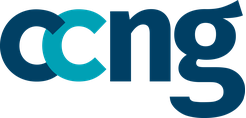Every contact center or customer experience leader comes to that fork in the road where you have to conduct a self-assessment with that perennial question “How good are we?”
That may seem like a tough question in today’s world of constant disruptions, workforce displacement and shifting consumer habits. I want to advocate for a different approach to that self-assessment process that doesn’t require an investment of time or limited resources.
The whole discipline of customer experience and contact centers have evolved dramatically over the past 10 years. Our business requires us to be an expert in not just running a contact center but also recruitment, logistics, employee engagement, budgets and the evolving technology marketplace.
Where do you start?
I would advocate you start with your own values and culture in your center. What is the place and value of the customer in your organization? Are your organization’s values focused on delivering exceptional experiences? Or is maintaining a great customer base with a cost-effective contact center the priority? It’s a pendulum swing that all organizations struggle with over time. Change is a constant and the value an organization may place on a contact center and its role may change over time.
If I understand our culture and organization focus, where do I go next?
If your organization is focused on your customer, listen to them. Start with your customers’ voices and the friction points they articulate on calls, surveys, and social media. An accurate polaroid photo of your department is the hardest part of customer experience delivery. Take time to listen before investing time or effort in evolving channels, quality, or training programs. Your customer’s voice might just tell you that you are doing well and it’s time to focus your efforts elsewhere.
If your organization is focused on efficiency and consistency, the best place to start is with your employees. Their tenure, technical competency, engagement, and direct leadership are the core drivers of your efficiency. Many organizations tend to look at transaction costs and the costs of running a contact center, but if you begin with your employees, it will direct you to either continue the focus on your employees or consider a technology lift for your team.
What resources are available to conduct my own self-assessment of my contact center disciplines?
I speak with a lot of vendors and technology firms. They are always bringing new solutions to the marketplace and willing to talk to anyone who is interested. Their teams are usually accomplished leaders in our industry. They not only know their product or services, but they also possess a rolodex of other industry contacts for you to consult. You also get the benefit of learning about a different discipline they excel at delivering to your industry peers.
Contact Center technology conferences — Your contact center management software firm usually has an annual user conference. There you can meet peers and other vendors who can share with you how to do more with what you have, but also different perspectives on the disciplines of contact centers. They have a wealth of knowledge to share and it’s a great networking opportunity.
Last, but very much not least, ask CCNG. They have 10K+ contacts across the industry. They know someone who can help you!
Ryan Bradley, recently former VP Selective Insurance, head of customer care, has held a variety of contact center leadership roles primarily in the insurance industry (Farmers, Erie, Selective). Ryan has been a senior leader contributor to the CCNG member network for over 7 years including presentations at CCNG’s Executive Summit and various regional events.



